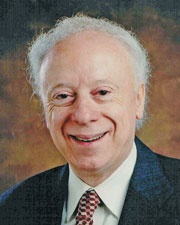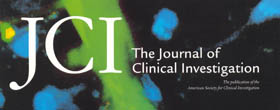 CytoSorbents Corporation (OTCBB: CTSO) is a publicly-traded, critical care focused therapeutic device company using blood purification to treat life-threatening illnesses. Its purification technology is based on biocompatible, highly porous polymer beads that can actively remove toxic substances from blood and other bodily fluids by pore capture and surface adsorption. Each polymer bead contains millions of pores and channels that can be modified to remove substances as small as drugs, to substances as large as antibodies.
CytoSorbents Corporation (OTCBB: CTSO) is a publicly-traded, critical care focused therapeutic device company using blood purification to treat life-threatening illnesses. Its purification technology is based on biocompatible, highly porous polymer beads that can actively remove toxic substances from blood and other bodily fluids by pore capture and surface adsorption. Each polymer bead contains millions of pores and channels that can be modified to remove substances as small as drugs, to substances as large as antibodies.
The Company has announced that it has been awarded a technology development contract worth up to $3.8 million by the Defense Advanced Research Projects Agency (DARPA). The contract would be over a period of five years as part of the company’s Dialysis-Like Therapeutics (DLT) program to treat sepsis, pending satisfactory achievement of key milestones.
DARPA is the U.S. Department of Defense agency responsible for funding cutting-edge programs such as the internet, the global positioning satellite system (GPS), and robotic surgery. In this case, it is funding the development of a portable, artificially intelligent blood purification system that can detect and remove, in real time, substances that can contribute to sepsis, including cytokines, toxins, biowarfare agents, pathogens, and activated cells. The goal is to save the lives of injured warfighters and civilians afflicted with sepsis, where approximately one in every three patients die today, even with the best medical treatment.
Under the terms of this contract, CytoSorbents will develop next-generation broad-spectrum, porous polymers capable of removing cytokines, toxins and certain biowarfare agents from whole blood, with $1.5 million in funding designated for the first year, based upon the achievement of pre-determined milestones.
Dr. Phillip Chan, Chief Executive Officer of CytoSorbents, stated,
"We are delighted to officially begin working with DARPA on this exciting project and are honored to have had our unique core blood purification technology selected for funding. We are one of the industry leaders in the area of blood purification to treat sepsis and other critical care illnesses, with our first-in-class CytoSorb® cytokine filter currently approved and commercialized in the European Union. That being said, under this DARPA program, we are looking to significantly advance our polymer technologies to not only remove cytokines, but also a wide variety of toxins, and do so with little to no anti-coagulation in both high flow and microfluidic systems. The excessive production of cytokines, or 'cytokine storm,' is common in the worst forms of sepsis, and triggers massive inflammation that can lead to organ failure and infection -- the two leading causes of death in the ICU. Meanwhile, toxins produced by bacteria, viruses and other pathogens play an additional devastating role on the body, poisoning or killing cells, leading to widespread tissue destruction and worsened inflammation and sepsis. And the threat of a biowarfare attack with toxins such as ricin and botulinum remains a perennial concern. Our porous polymers are ideally suited to achieve the broad spectrum removal that is needed to counter most of these agents."
Dr. Chan continued,
"Because of the maturity of our technology, we are confident in our ability to meet DARPA's timetable for technology development and strict performance metrics. Over the past several months, we have also collaborated with some of the leading potential systems integrators, to include our technologies into their integration proposals, under a separately funded DARPA DLT solicitation. The role of the systems integrator is to put together the best detection, separation and predictive modeling technologies into a single blood purification system and guide it to human clinical trials within 4 to 5 years. These partnerships are mutually beneficial and will help to contribute to the success of the overall program."
Dr. Chan concluded,
"Just within the recent past, we have seen many high-profile cases of sepsis here in the U.S. including a young woman injured from a fall from a broken homemade zip-line who developed sepsis from a 'flesh-eating' bacterial infection, and a 12-year-old boy who died of unrecognized sepsis after cutting his arm during a basketball game. Unfortunately, these cases are not unusual, with thousands of patients dying silently from sepsis every day in hospitals around the world. The number of sepsis cases in the U.S. alone has doubled in the past decade, and continues to climb due to increased antibiotic resistance, a high rate of hospital-acquired infections, and an aging baby boomer population that is prone to infection due to age, diseases such as diabetes and cancer, and the use of implantable medical devices such as artificial hips and knees. There are currently no approved therapies to treat sepsis in the U.S. or in the European Union. Therapies like CytoSorb® and the device being proposed by DARPA are sorely needed and we are proud to be part of this worthy effort."
Read the full press release here.



 jci,
jci,  ushma neil |
ushma neil |  Print Article
Print Article  Email Article Posted on
Email Article Posted on  Monday, October 1, 2012 at 1:05PM
Monday, October 1, 2012 at 1:05PM  Permalink in
Permalink in  Education,
Education,  biotech
biotech 






